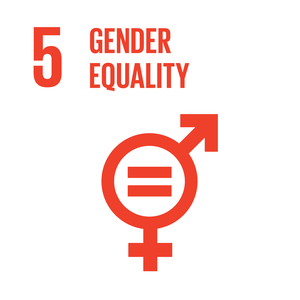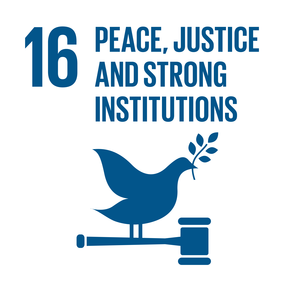Gender in Emergencies
Global Commitments to Gender in Emergencies Work
CARE’s commitments to gender in emergencies work is supported by international and national human rights law, humanitarian and gender standards and guidelines and UN Security Council Resolutions; underpinned by a validated set of extensive field experience pertaining to the equal protection of and provision for all beneficiaries without discrimination.
Sustainable Development Goals
In 2015, the international community adopted a set of Sustainable Development Goals (to succeed the Millennium Development Goals) that articulated ambitious goals to be achieved by 2030. The SDGs are important benchmarks for accountability; as such they are useful reference points not only for policy analysis and advocacy, but also for program design. Each country is encouraged to produce a voluntary national review (VNR) annually to share progress against the SDGs at the national and sub-national level. This is an opportunity for civil society engagement and advocacy. [See VNR Documentation and Reporting by Country]
- SDG Target 5.1 End all forms of discrimination against all women and girls everywhere
- SDG Target 5.2 Eliminate all forms of violence against all women and girls in the public and private spheres, including trafficking and sexual and other types of exploitation
- SDG Target 5.3 Eliminate all harmful practices, such as child, early and forced marriage and female genital mutilation
- SDG Target 5.4 Recognize and value unpaid care and domestic work through the provision of public services, infrastructure and social protection policies and the promotion of shared responsibility within the household and the family as nationally appropriate
- SDG Target 5.5 Ensure women’s full and effective participation and equal opportunities for leadership at all levels of decision-making in political, economic and public life
- SDG Target 5.6 Ensure universal access to sexual and reproductive health and reproductive rights as agreed in accordance with the Programme of Action of the International Conference on Population and Development and the Beijing Platform for Action and the outcome documents of their review conferences
- SDG Target 5.a Undertake reforms to give women equal rights to economic resources, as well as access to ownership and control over land and other forms of property, financial services, inheritance and natural resources, in accordance with national laws.
- SDG Target 16.1 Significantly reduce all forms of violence and related death rates everywhere
- SDG Target 16.5 Substantially reduce corruption and bribery in all their forms
- SDG Target 16.6 Develop effective, accountable and transparent institutions at all levels
- SDG Target 16.7 Ensure responsive, inclusive, participatory and representative decision-making at all levels
- SDG Target 16.10 Ensure public access to information and protect fundamental freedoms, in accordance with national legislation and international agreements
- SDG Target 16.B Promote and enforce non-discriminatory laws and policies for sustainable development


Convention for the Elimination of All Forms of Discrimination against Women (CEDAW)
The Convention for the Elimination of All Forms of Discrimination against Women (CEDAW), adopted in 1979 by the UN General Assembly provides the basis for realizing equality between men and women through the protection of women’s equal access to, and equal opportunities in, political and public life. This includes in education, health, and employment across stable and emergency contexts. The countries that have ratified or acceded to the Convention are legally bound to put its provisions into practice. The integration of gender equality and women’s empowerment in humanitarian action protects these fundamental freedoms and rights. [View Ratifications and Ramifications by Country]
Security Council Resolutions
The adoption of the Women Peace and Security Framework (United Nations Security Council Resolution (UNSCR) 1325) in October 2000 reaffirmed the role of women in the prevention and resolution of conflicts, peace negotiations, peace-building, peacekeeping, humanitarian response and reconstruction. This resolution stresses the importance of women’s equal participation, and full involvement in all efforts to maintain and promote peace and security. It urges special measures to protect women and girls from GBV in situations of armed conflict, and the need to implement international humanitarian and human rights law that protects the rights of women and girls during and after conflict. The resolution specifically notes the need to take into account the particular needs of women and girls in refugee camps and settlements, including in their design.
Security Council Resolution 1820 was adopted in 2008 and condemns the use of sexual violence as a tool of war, and declares that “rape and other forms of sexual violence can constitute war crimes, crimes against humanity or a constitutive act with respect to genocide”.
Humanitarian Accountability and Standards
The Core Humanitarian Standard on Quality and Accountability (CHS) outlines nine commitments to improve the quality and effectiveness of humanitarian response, facilitating greater accountability to crisis-affected communities. As a core standard, the CHS acknowledges the vital role of participation for an effective response, and pivotally, that this participation comes from a diverse range of the community, including those differing in sex, age and ability. Gender in emergencies work is particularly relevant to ensuring the fulfillment of CHS 1: Humanitarian response is appropriate and relevant.
Along with the CHS, The Sphere Humanitarian Charter and Minimum Standards is the core set of guiding principles by which CARE are committed to undertake their humanitarian work. The humanitarian principles, amongst which is impartiality, enshrine the principle of humanitarian assistance without bias or discrimination according to age, gender, race, religion, or ethnicity. The Sphere handbook is currently under review and revision.
World Humanitarian Summit
The commitments generated during the 2016 World Humanitarian Summit prominently included improving gender outcomes. Women and girls, often previously seen as passive victims or beneficiaries of assistance, were recognized as often being amongst the first responders. Some of the specific outcomes included commitments to Catalyze action to achieve gender equality. These commitments include the effort to:
- Fully comply with humanitarian policies, frameworks and legally binding documents related to gender equality, women’s empowerment, and women’s rights.
- Ensure that all humanitarian programming is gender responsive.
- Implement a coordinated global approach to prevent and respond to gender-based violence in crisis contexts, including through the Call to Action on Protection from Gender-based Violence in Emergencies.
- Ensure universal access to sexual and reproductive health and reproductive rights as agreed in accordance with the Programme of Action of the International Conference on Population and Development and the Beijing Platform for Action and the Outcome documents of their review conferences for all women and adolescent girls in crisis settings.
- Empower women and girls as change agents and leaders, including by increasing support for local women’s groups to participate meaningfully in humanitarian action.
Call to Action on Protecting Girls and Women in Emergencies
GBV violates international human rights law and the principles of gender equality. In 2013, DFID launched the Call to Action on Protecting Girls and Women in Emergencies, with the US assuming leadership in 2014. The Call to Action aims to transform the way in which GBV is addressed through collective action from government partners, international organizations, and NGOs, and works through three objectives:
- Establish specialized GBV services and programs that are accessible to anyone affected by GBV and are available from the onset of an emergency.
- Integrate and implement actions to reduce and mitigate GBV risk across all levels and sectors of humanitarian response from the earliest stages of emergencies and throughout the program cycle.
- Mainstream gender equality and the empowerment of women and girls throughout humanitarian action.
Every Woman Every Child
The Every Woman Every Child movement, launched in 2010 by the UN Secretary-General Ban Ki-Moon aims to mobilize action to address the major health challenges facing women, children and adolescents, aiming to both protect their wellbeing, and end preventable deaths. The Global Strategy is built in alignment with the SDGs, with one of the key action areas to assess risks, human rights and gender needs in humanitarian and fragile settings.
